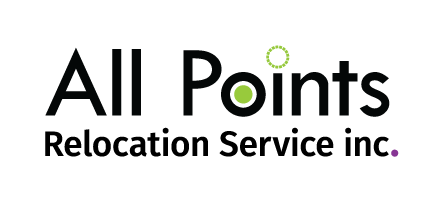In boardrooms from Hong Kong to Hamburg, the big question isn’t when trade volumes will return to normal — it’s what gets left behind when they do. While CEOs debate tariffs, containers, and balance sheets, the human-scale logistics of global relocation — household goods — are about to face a supply chain reckoning.
At All Points, we’ve already seen it begin.
Last week, a routine household goods move from North America to Australia — part of a straightforward executive relocation for a global firm — missed its loading window. The ship was full. The client had booked weeks in advance. But their container was bumped for a higher-margin electronics shipment. We made alternate arrangements, but it added cost, stress, and a week of delay. This isn’t a horror story. It’s a warning shot.
We think these bumps will go from occasional to commonplace within weeks.
The Global Context: Blank Sailings, Tight Capacity, and Supply Chain Hangovers
Shipping lines are pulling capacity from global trade lanes at a rate not seen since early COVID. Blank sailings (cancelled voyages) are up double digits year-over-year. Transpacific routes are especially strained, with sailings cut in anticipation of reduced demand due to new U.S. tariffs on Chinese imports.
Yet when demand surges back — as it inevitably will, whether via policy rollback or restocking panic — available space will be scarce, and profit-per-container will rule.
Household goods? They don’t stack neatly. They don’t ship in high volume. And they don’t pay premium freight. They are, in the cold eyes of global carriers, the poor man on the boat.
HR and Procurement: You Need to Know What’s Coming
For HR leaders managing executive relocations, and procurement officers negotiating supplier performance, here’s the brutal reality:
- Your transferee’s personal effects are about to compete with Barbie dolls and blenders for a place on the ship.
- If you haven’t updated your mobility timelines to account for shipping volatility, you’re already late.
- The surcharge culture is back. And it’s not coming with a courtesy call.
Shipping lines are exercising what they call “yield discipline.” Translated: if it doesn’t make top dollar, it doesn’t get onboard.
Which Routes Are Suffering?
- Asia to North America: Expect volatility and delays through summer. Tariff-induced panic orders are soaking up capacity.
- Asia to Europe: Red Sea rerouting, slow steaming, and congestion are creating rolling delays.
- Europe to South America: Selective service reductions. Poorly booked routes may disappear altogether.
The transatlantic corridor (Europe to East Coast North America) is holding up better — for now. But even here, space is tightening.
Household Goods in the Crosshairs
Let’s be blunt: a 20-foot container full of someone’s bedroom set doesn’t offer the same return as a container full of routers or premium cookware. Freight forwarders know this. Carriers know this.
And when shipping lines cut capacity, it’s the low-yield, high-touch shipments that get de-prioritized.
At All Points, we don’t accept that. But we have to plan for it.
What We’re Doing — And What You Should Be Asking
Our teams are booking household shipments 30 to 45 days in advance, with routing strategies that consider second-best port options if primary lanes are congested. We’re working closely with our freight partners to secure allocation guarantees, even on mixed-load routes. And we’re encouraging clients to split air/sea shipments when possible: send the essentials fast, let the furniture follow.
As an HR leader or procurement executive, you should be asking:
- Has my relocation provider updated shipping lead times for all affected lanes?
- Are they pre-booking at risk, or waiting for confirmed load dates?
- Can they support my employees with flexible delivery, storage, and communication plans when a delay happens?
Because it will happen.
The Big Picture: Mobility is Still Human
In all of this, it’s easy to forget the human at the end of the container. The transferee. The family. The one who arrives in Singapore or Munich and finds out their goods are stuck in a port queue in Long Beach.
We believe household goods matter. Not just because they fill a house, but because they signal that a new chapter has truly begun. It’s hard to onboard an executive when they’re living out of a suitcase.
Shipping volatility isn’t just an operational issue. It’s a retention risk, a reputation issue, and a relocation experience fail waiting to happen.
All Points has been through this before — SARS, COVID. We know how to fight for freight space with our partner, and we know how to calm a transferee when their world is stuck at sea.
But this time, the disruption is quieter. Less headline-worthy. And, perhaps, more dangerous because of it.
Final Thought: The Container Has No Empathy
One of my favourite David Foster Wallace lines was: “The truth will set you free. But not until it is finished with you.” The shipping container is not finished with us.
HR and procurement professionals who understand this now, who plan with foresight and urgency, will spare themselves (and their people) the worst of the chaos.
The rest? They’ll be explaining to their CFO why a two-week delivery window became six, and why the VP of Finance in Berlin is working off a folding table.
Let’s not get caught explaining. Let’s get ahead of it.

